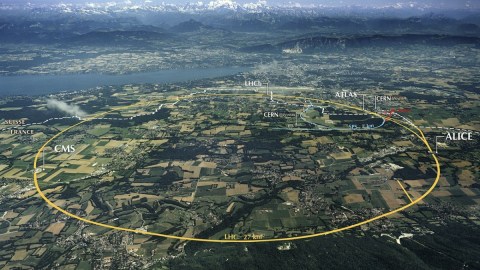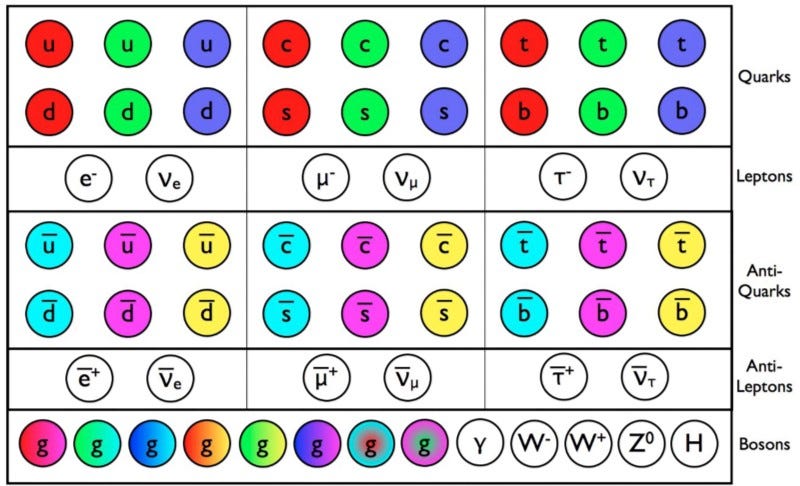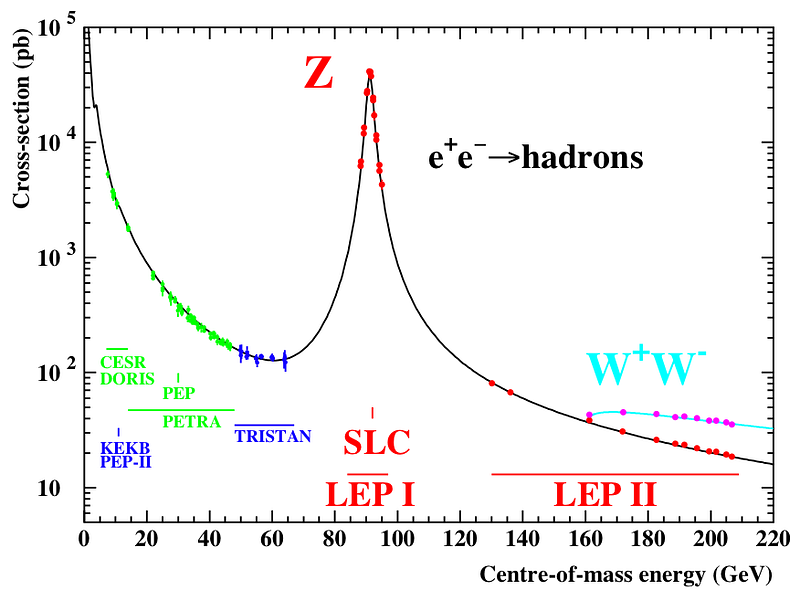What it means if CERN discovers a new particle

There’s been a small but significant excess observed, and a new particle is one possible explanation. What will it mean?
“I’m a fan of supersymmetry, largely because it seems to be the only route by which gravity can be brought into the scheme. It’s probably not even enough, but it’s a way forward to get gravity involved. If you have supersymmetry, then there are more of these particles. That would be my favourite outcome.” –Peter Higgs
In the 1960s and 1970s, the finishing theoretical touches were being put on the Standard Model of elementary particle physics. Inside the world of the atom were subatomic, fundamental particles, including electrons, two types of quarks and the gluons. In addition, over time, a whole slew of other particles were discovered:
- a total of six types of quarks and their corresponding antiparticles (antiquarks), each coming in three colors (or anticolors),
- three charged leptons and three neutral, low-mass neutrinos, each with their own antiparticles,
- and the bosons: the photon (for the electromagnetic force), the eight gluons (for the strong nuclear force), the W+, W- and the Z (for the weak force), plus the Higgs boson.

It took 50 years from the time this model was set into place for the entire set to be discovered. The culmination of the Standard model was the discovery of the Higgs boson: earlier this decade at the Large Hadron Collider at CERN. But in that time, there were a whole slew of other mysteries that came about, mysteries that — by their very nature — require the existence of new particles to explain the physics we observed. They include:
- dark matter, or the fact that some 80–85% of the mass of the Universe cannot be accounted for by the particles in the Standard Model.
- neutrino masses, which should have been zero, but instead are tiny (millions of times lighter than the electron) and non-zero, and require a new particle to explain their existence.
- the matter-antimatter asymmetry, which cannot be explained by the known particles and interactions alone, and require new physics — particles and interactions — to account for what our Universe gives us.

Many different scenarios exist that could explain these phenomena through the existence of new particles, but a few of the more interesting ones include supersymmetry, extra dimensions and technicolor extensions. Why are these, among others, interesting? Because if they are correct, they should give rise to new fundamental particles, particle beyond the Standard Model, that the LHC might see!

Supersymmetry, for instance, predicts the existence — in all its forms — of at least one (and in most models, four) additional, heavy, Higgs-like particles. The way to discover a particle like this is to calculate, at all energies, what the expected contributions are from all the known particles to various decay pathways (two photons, two charged leptons, a W+ and W- boson, etc.), and then make the observations and look for differences.
If you find significant enough differences in the right places, you’ll discover a new particle. This is how, in the past, we’ve discovered particles like the Z, the top quark and the Higgs.

In December, the ATLAS collaboration announced that it appeared they had seen a little bit of evidence — not enough to claim discovery, but enough that it looked like it might not just be noise — of a new particle around 750 GeV in energy, or about five times the mass of the Higgs boson. It was consistent, they said, with another spin-0 particle, meaning that it might be another Higgs! At the same time, the CMS collaboration saw something very similar, although it was consistent with a spin-2 particle.
As of last week, both collaborations have now taken the full suite of data currently available, and have come together (although with independent results) to compare.

Before you go getting all excited, realize the following: this might turn out to be nothing! Sure, there’s something fishy going on in this 750 GeV energy range, but the statistics up there are very limited right now. There’s a very good reason that particle physicists don’t claim discoveries of new particles until a certain standard (5σ significance) is reached: the dustbin of history is littered with “discoveries” that turned out to be mere fluctuations in the data that went away with more and better data. That could be exactly what we’re looking at here.
The beautiful part of this is that we won’t have to wait forever. The LHC restarts at its highest energies and highest luminosities (i.e., the greatest numbers of collisions-per-second) ever this May, and by time mid-summer rolls around, we should know whether this is a true particle or merely a fluctuation. If it is a new particle, we’ll have our first direct hint of what lies beyond the Standard Model, and a new era in physics will be ushered in. But if it turns out to be a fluctuation — and if you’re a betting person, you’d be smart to bet on the fluctuation answer — it’s back to the drawing board for model-builders. The secrets of nature may turn out to be more elusive than physicists have imagined thus far.
This post first appeared at Forbes. Leave your comments on our forum, check out our first book: Beyond The Galaxy, and support our Patreon campaign!





